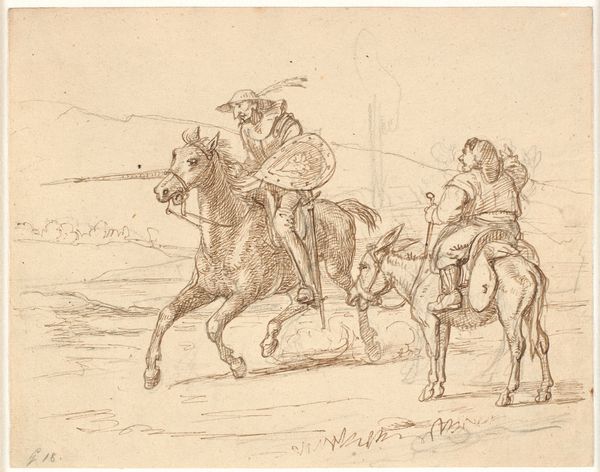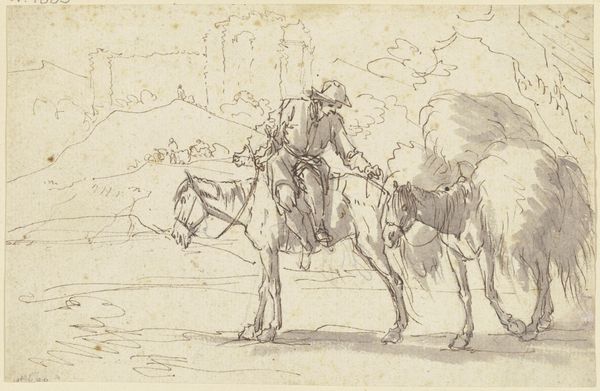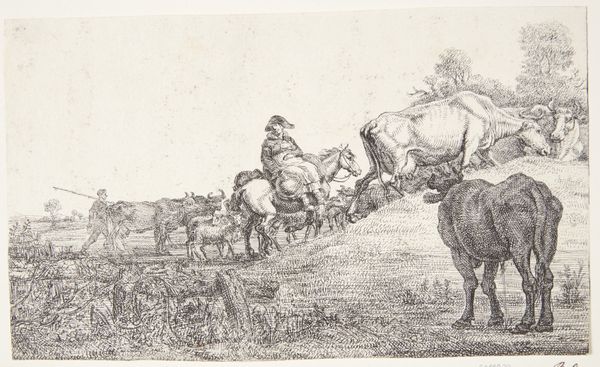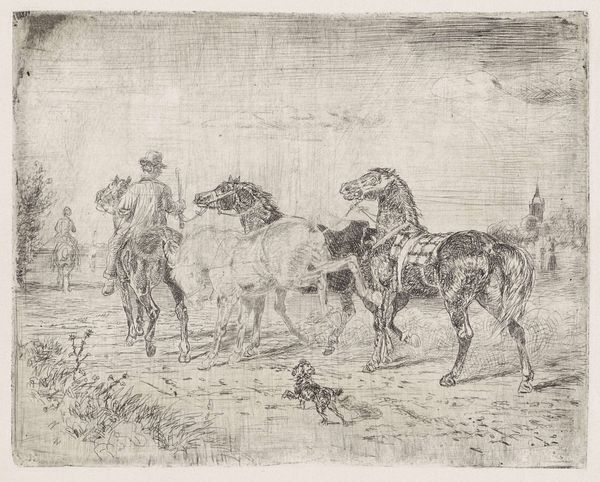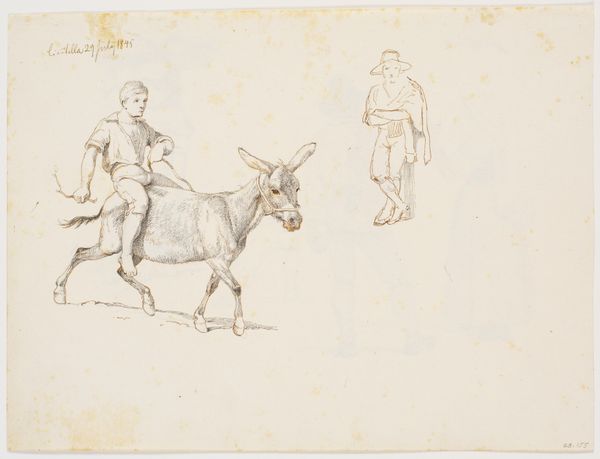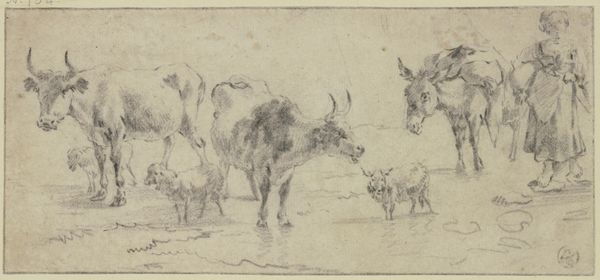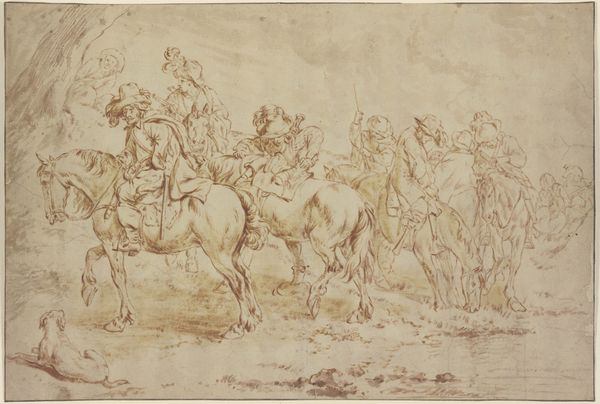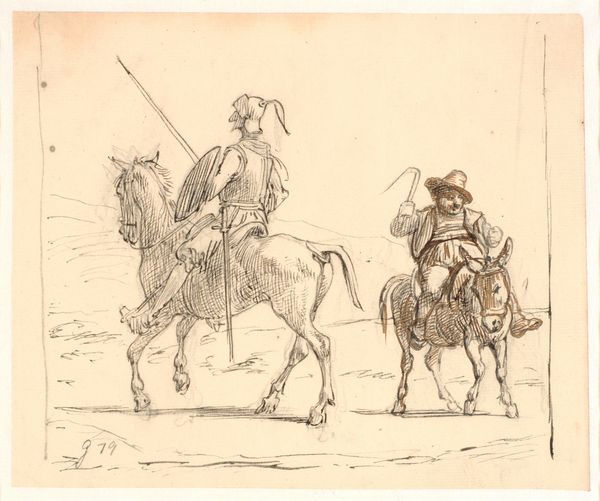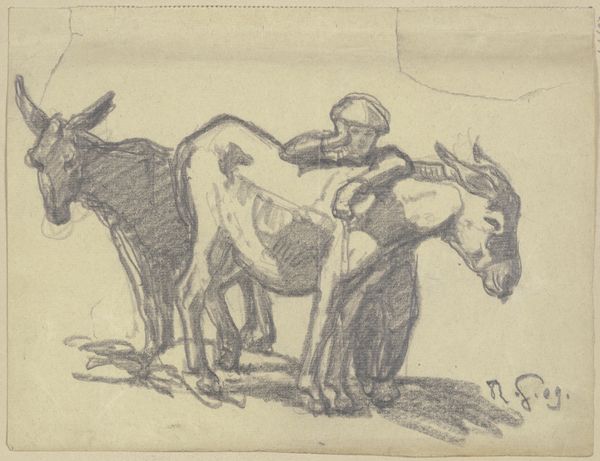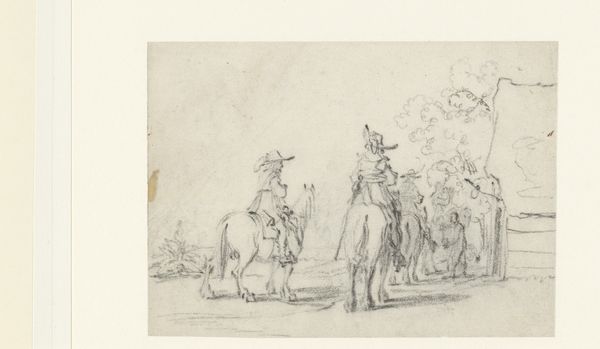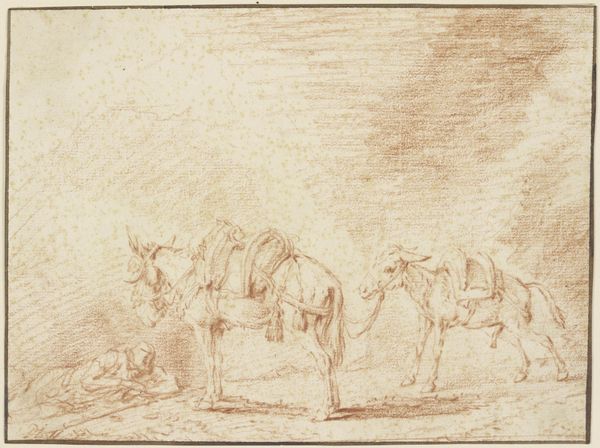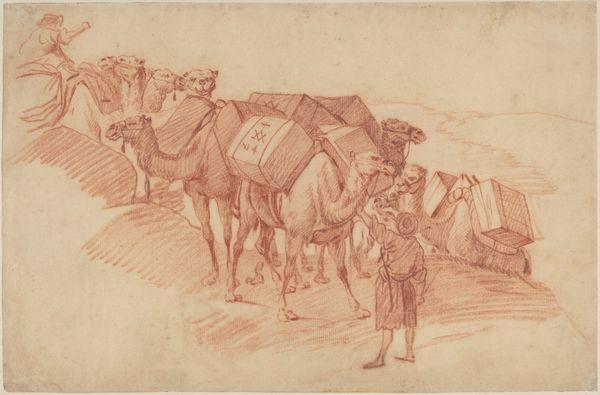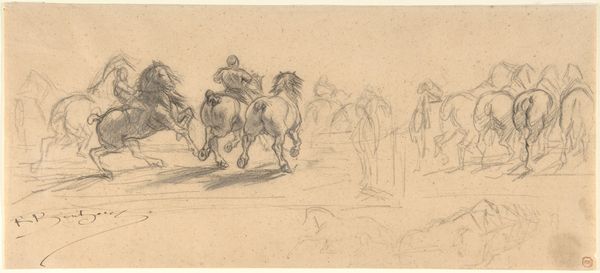
drawing, paper, pencil, chalk
#
drawing
#
baroque
#
landscape
#
paper
#
pencil
#
chalk
#
genre-painting
Copyright: Public Domain
Curator: Immediately striking, isn’t it? Nicolaes Berchem's drawing, "Hirtin zu Pferde, zwei Hirten zu Fu\u00df, bei einer Kuhherde" presents an ostensibly simple pastoral scene, rendered with chalk and pencil on paper. I am immediately drawn to its ethereal, dreamlike quality. Editor: Indeed. But “simple” it is not! What is most striking is the artist's careful orchestration of labor, the material realities embedded within this picturesque depiction. Berchem renders herders, livestock, and even the land as co-dependent agents in the early formations of modern capital. The image reflects a transformation of landscape to resource. Curator: A fair point. You make me consider the tangible skill employed. The textures alone—the rough hides of the cattle against the soft fabrics of the riders—demonstrate Berchem’s control of the chalk medium, its capacity to render light and shadow with nuance. I appreciate your framing, though I read the composition first. Editor: The question of luxury also strikes me: What were the class dynamics inherent to pastoral life? Did those who commissioned works like these hold any self-awareness regarding the economic relationships to such scenes, in other words, did the artwork itself reflect those material hierarchies? Curator: Well, we know genre painting grew in popularity at that time…Berchem skillfully crafts a dynamic composition, directing the eye through subtle gradations of light and shadow, ultimately celebrating material wealth via bucolic labor. I can feel the weight of each line and admire how such basic supplies come together to create this picture of leisure and wealth! Editor: And it’s in this labor of depiction where the power dynamic finds its roots. It is work on paper mimicking, depicting labor off it. And while Berchem certainly emphasizes the craft of his rendering—what also interests me is how class-awareness of these social inequalities becomes palatable through this refined technique. Curator: Perhaps we should acknowledge that there are varying viewpoints when looking back on an artist that, even with socio-economic context, makes something of incredible aesthetic merit. Even the absence of color, in its monotone aesthetic, gives it this strange balance… Editor: I suppose if we think about this artwork and all artworks as documents of labor and material, what stands out to me the most is art's inevitable connection to those relations, and the importance of that relationship, when reflecting back upon our shared histories and the complicated, messy legacies which linger around its edges. Curator: That lingering sensation, that balance that you’re talking about--it’s palpable and present for me too; a timeless snapshot of a passing world captured on a simple sheet of paper.
Comments
No comments
Be the first to comment and join the conversation on the ultimate creative platform.
